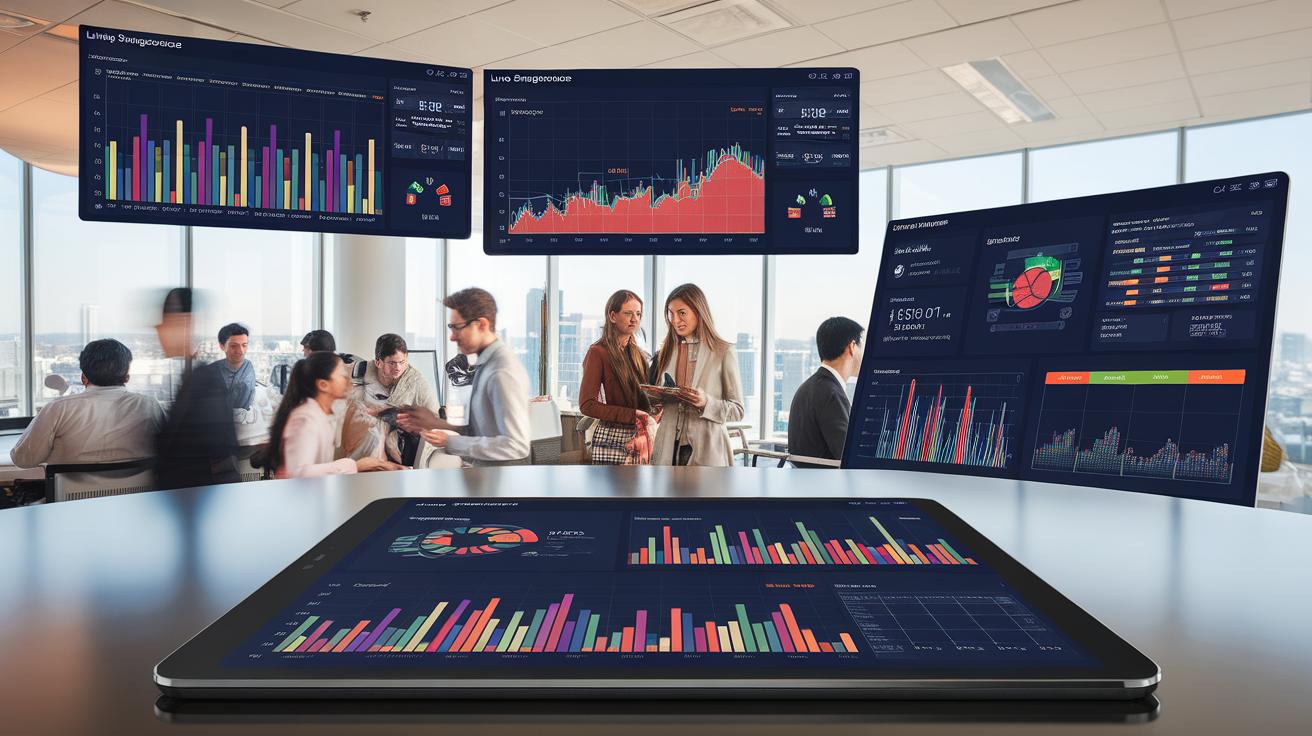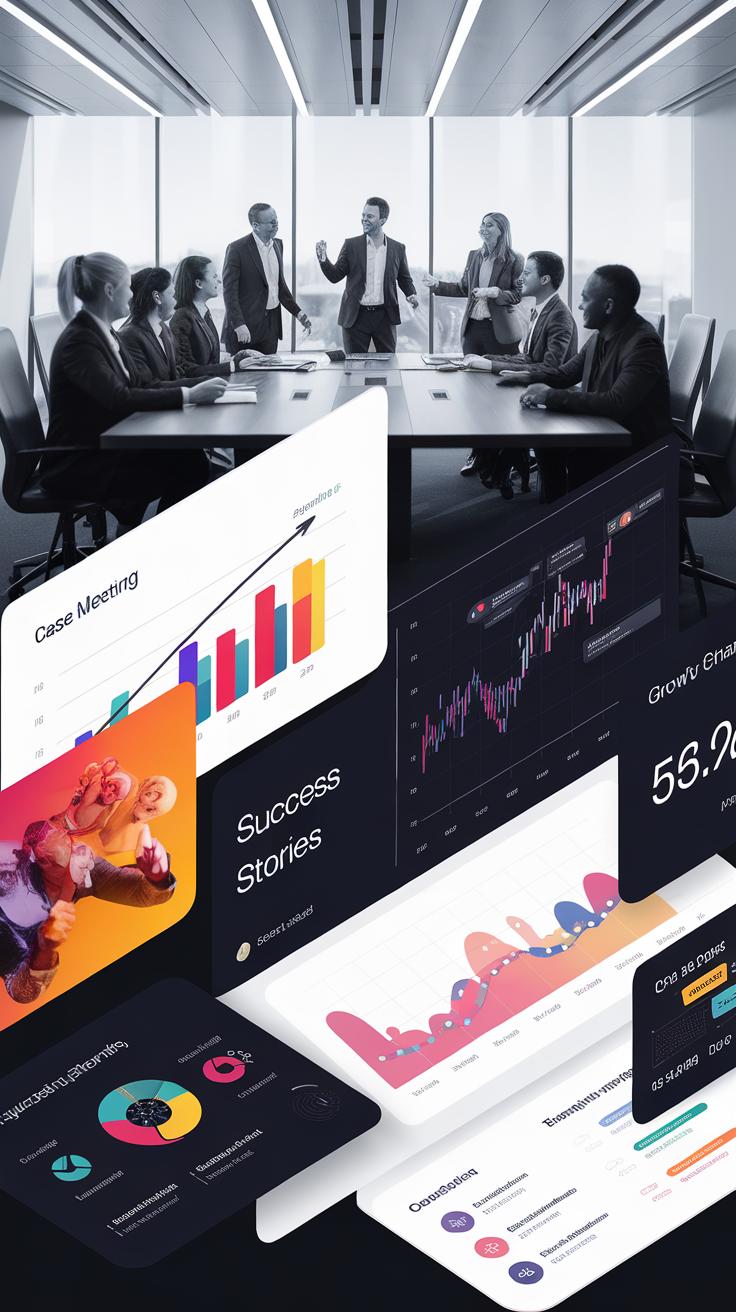
Harness Media Analytics to Drive Your Content Network Forward
Introduction
Media analytics has become a crucial component in the digital ecosystem, particularly for brands looking to optimize their content network. By effectively analyzing social media data, organizations can gain valuable insights into audience engagement, content performance, and emerging trends. The process involves not only the collection of vast amounts of unstructured data but also its transformation into actionable intelligence. Understanding media analytics allows marketers to craft data-driven strategies that enhance both visibility and effectiveness in reaching their target audiences.
In an age where digital presence is paramount, leveraging media analytics is no longer optional; it is essential for sustainable growth. By harnessing these analytics within a structured content network, businesses can ensure high availability and performance of their services. This article will explore the multifaceted nature of media analytics, the processes involved in data identification and analysis, and how these insights can propel your content strategy forward, ultimately creating a robust and responsive digital environment.
Understanding Media Analytics The Backbone of DataDriven DecisionMaking
Media analytics refers to the systematic collection and evaluation of data generated across various media platforms. This discipline plays a pivotal role in modern digital marketing, facilitating insights that inform strategic decisions. In an age where consumer behavior is often dictated by digital interactions, understanding media analytics enables businesses to tailor their content effectively and optimize their outreach efforts.
The significance of media analytics lies in its ability to transform raw data into actionable insights. It serves as a critical component of data-driven decision-making, allowing marketers and organizations to adapt their strategies based on quantifiable metrics rather than gut feelings. By leveraging media analytics, businesses can enhance their understanding of audiences, pinpoint content performance, and identify emerging trends that influence consumer preferences.
Different types of data sources fuel the media analytics process. These can be segmented into primary and secondary sources. Primary sources include direct consumer interactions, such as website visits, social media engagement, and survey responses, providing real-time feedback on content effectiveness. Secondary sources involve third-party data, including market research reports and competitor analysis, which help contextualize internal data.
The methods applied in media analytics encompass qualitative and quantitative techniques. Quantitative analysis often involves statistical methods to measure engagement metrics such as click-through rates, conversion rates, and return on investment (ROI). In contrast, qualitative analysis delves into user sentiments and motivations, often utilizing tools like social listening to analyze consumer conversations across social platforms.
Media analytics is a powerful tool that allows organizations to make evidence-based decisions. By integrating multiple data sources and employing various analytical methods, companies can enhance their digital strategies, ensuring their content resonates with their intended audiences. In doing so, media analytics does not just support marketing efforts; it innovates them, leading to a more engaged and loyal customer base.
The Process of Media Analytics Driving Your Content Network Forward
Data Collection
The first step in the process of media analytics is data collection. This involves aggregating data from diverse sources such as social media platforms, website traffic, user engagement metrics, and more. Utilizing tools like Google Analytics and social listening tools enables businesses to gather relevant data on audience behavior and preferences. Automation tools can streamline this process, allowing for real-time data access and reducing the manual labor typically associated with data gathering.
Data Processing
Once data is collected, the next phase is processing the information. This includes cleaning the data for accuracy by removing duplicates or irrelevant entries and standardizing formats. Data wrangling tools, such as OpenRefine or Talend, can assist in preparing datasets for analysis. This stage ensures that the information is reliable and formatted correctly for analysis, which increases the effectiveness of subsequent steps.
Data Analysis
Data analysis comes after processing and is a critical component that transforms raw data into meaningful insights. Advanced analytical tools, like Tableau, R, and Python, can be employed to analyze trends, identify patterns, and uncover correlations in the data. This stage could include statistical analysis or more advanced machine learning algorithms that predict future behavior based on historical data. Visual analytics allows for better understanding and communication of the findings.
Data Interpretation
The final step in media analytics is interpreting the analytical outcomes. This involves understanding the implications of the data insights on current and future content strategies. Collaboration between marketing teams, data analysts, and content creators is crucial at this juncture, as it helps to align data interpretations with organizational goals. Tools for visualization can aid in presenting insights in a clear, digestible manner that guides decision-making processes regarding content creation and distribution.
Throughout these steps, employing technologies such as artificial intelligence and machine learning can enhance both the efficiency and accuracy of the analytics process. By embracing comprehensive media analytics, organizations can not only refine their content strategy but also ensure their digital presence is responsive and aligned with audience preferences, thus driving their content network forward.
Leveraging Insights for Content Strategy
Transforming Media Analytics into Actionable Strategies
Turning data insights from media analytics into effective content strategies requires a structured approach. By converting analytical findings into pragmatic actions, organizations can enhance their content development and distribution processes, making them more aligned with audience preferences and engagement patterns.
It is critical to identify key performance indicators (KPIs) that resonate with your content objectives. These KPIs may include metrics such as engagement rates, shares, click-through rates, and audience demographics. Once established, they guide the analysis and enable content creators to hone in on what resonates most with their target audience.
Insights from media analytics provide invaluable information on audience behavior and preferences. For example, by analyzing past content performance, organizations can discern which topics generate the most interest, which formats (videos, blogs, infographics) drive engagement, and which distribution channels yield the best results. Leveraging this data allows content teams to tailor future content to match audience expectations more accurately.
Another pivotal strategy is to implement A/B testing based on analytics insights. By testing different versions of content—be it headlines, graphics, or calls to action—teams can identify which variations perform better. This iterative process not only sharpens content quality but also facilitates more efficient resource allocation by focusing efforts on the winning strategies.
Understanding audience segmentation is essential. Analytics can reveal distinct audience groups with their preferences and behaviors. By employing targeted content strategies that cater to these segments, organizations can enhance relevance and drive higher engagement rates. For instance, different demographics might respond favorably to varying tones, styles, or themes in content.
Distribution strategies also benefit significantly from analytics insights. Knowing when and where to publish content can optimize visibility and engagement. For instance, if analysis reveals peak engagement during specific hours on certain platforms, scheduling posts during these times can lead to enhanced reach and interaction.
By converting insights derived from media analytics into practical strategies, organizations can create content that not only resonates with their audience but also positions them as leaders in their respective fields. Such alignment between analytics and content strategy fosters a more dynamic and responsive content network that is better equipped to meet audience needs in a competitive landscape.
Implementing Media Analytics in Your Content Network
Roadmap for Incorporating Media Analytics
Incorporating media analytics into an existing content network is a multifaceted endeavor that requires a strategic approach. First, organizations must establish clear objectives that align with their overall content strategy. This involves determining what specific data points are relevant, such as viewer engagement rates, audience demographics, and content performance metrics. Establishing these benchmarks will guide subsequent analytical efforts.
Various platforms, such as Google Analytics, Adobe Analytics, or specialized media analytics software, can provide in-depth insights. The chosen tools should seamlessly integrate with the existing content management system to ensure smooth data collection and interpretation. Training staff to utilize these tools effectively can enhance their ability to derive actionable insights from the data.
Once the foundation is in place, organizations should focus on data collection and analysis. Implementing a robust data-gathering strategy will allow for real-time tracking of user engagement and content distribution patterns. This phase may include setting up tracking codes, creating dashboards for visualization, and conducting regular audits to ensure data accuracy.
The Role of Content Delivery Networks
Content Delivery Networks (CDNs) play a vital role in the efficient implementation of media analytics. CDNs enhance the distribution of content, ensuring that it is delivered quickly and reliably to users across various geographic regions. This rapid content delivery is essential for collecting real-time analytics, as delays can skew engagement metrics. A well-optimized CDN not only improves performance but also provides valuable data on user access patterns and geographic distribution.
CDNs can work in synergy with media analytics by offering insights into content load times and streaming quality. Analyzing this technical data can highlight not only which content resonates with audiences but also how technical factors impact user experience. Businesses can make data-driven decisions to optimize both content and delivery methods, ultimately enhancing user satisfaction and engagement.
Organizations should foster a continuous feedback loop between analytics and content creation. Regularly reviewing analytics allows teams to adapt their strategies based on user preferences and content performance. This adaptive approach can lead to more effective content distribution and, consequently, improved audience engagement, ensuring that the content network remains dynamic and responsive to user needs.
Case Studies Success Stories in Media Analytics
Real-World Examples of Media Analytics in Action
Media analytics has emerged as a transformational tool for organizations striving to refine their content strategies and drive measurable growth. Businesses are increasingly harnessing specific data insights to enhance their content networks, leading to innovative approaches in audience engagement and marketing effectiveness. This segment examines notable case studies highlighting extensive applications of media analytics to cultivate success.
One compelling example is that of a leading global media conglomerate that utilized media analytics to optimize its content distribution channels. By analyzing data on viewer behavior, preferences, and engagement metrics, the organization tailored its programming and negotiated distribution deals that resonated with targeted demographics. It’s reported that the company achieved a 30% increase in viewership and a significant boost in advertising revenue as a direct consequence of data-driven decision making.
Another illustrative case involves a digital publisher that focused on content recommendation algorithms. By implementing advanced analytics to track user interactions with their articles and multimedia, this publisher was able to generate personalized content suggestions. Through A/B testing of different recommendations, they identified what types of content resonated most with unique user segments. As a result, they experienced a phenomenal 50% increase in both click-through rates and time spent on the platform, ultimately cementing their position as an industry leader in digital content.
A retail eCommerce platform also showcases an impressive application of media analytics to enhance its marketing efforts. Utilizing viewer engagement metrics from social media and web traffic data, the platform refined its content creation strategy, aligning it more closely with customer preferences. This precision targeting led to a 40% uptick in conversion rates during promotional campaigns, demonstrating the power of analytics-driven content strategy in closely connecting businesses to their consumers.
These real-world success stories illustrate that integrating media analytics into content networks is not merely an option but a necessity for firms across industries. The ability to harness data effectively allows businesses to adapt swiftly to shifting consumer demands and trends, fostering a culture of informed decision-making. By doing so, organizations can continue to cultivate their brand presence, drive growth, and remain competitive in an ever-changing marketplace.
Future Trends in Media Analytics Evolving Role in Content Strategies
Technological Advancements and Their Implications
The landscape of media analytics is rapidly shifting, driven by advancements in technology that promise to reshape content strategies. The future of media analytics is poised to be characterized by artificial intelligence, machine learning, and enhanced data visualization tools. These innovations aim to provide deeper insights and more nuanced understanding of audience behaviors and preferences.
One of the most promising advancements is the integration of AI-powered analytics tools that can automate data collection and analysis. These systems are becoming adept at processing large volumes of both structured and unstructured data in real-time. As a result, businesses will have the ability to quickly adapt their content strategies based on immediate feedback from users. By analyzing engagement metrics and audience sentiment, companies can refine their approaches, ensuring that their content is both relevant and impactful.
Machine learning algorithms will also play an instrumental role in forecasting trends and identifying patterns within consumer behavior. For instance, predictive analytics can forecast which types of content are likely to resonate with audiences based on historical data. This foresight empowers content creators to tailor their offerings more effectively, aligning them with the interests and habits of their target demographic.
Data visualization tools will become increasingly sophisticated, enabling stakeholders to interpret complex datasets easily. Interactive dashboards will allow users to drill down into metrics and derive actionable insights without needing extensive statistical knowledge. Such tools lower the barrier to entry for small-to-medium enterprises seeking to leverage media analytics for strategic advantage.
The convergence of media analytics with social media monitoring will further enrich content strategies. Real-time insights from social platforms can highlight trending topics and conversations, allowing brands to participate in or initiate discussions that align with their values. This dynamic interaction can enhance consumer engagement and foster community loyalty, contributing to brand growth.
As organizations embrace these technological advancements, the role of media analytics will become increasingly integral to decision-making processes. Brands that prioritize data-driven insights will find themselves in a much stronger position to adapt and thrive in a competitive digital ecosystem. As this evolution unfolds, it will be imperative for businesses to remain agile, continuously refining their strategies based on the latest analytical capabilities available.
Conclusion and Next Steps Harnessing Media Analytics to Drive Your Content Network Forward
Throughout this article, we have explored the transformative role of media analytics in shaping content strategies and enhancing the efficiency of digital networks. As we conclude, it becomes clear that understanding and utilizing media analytics is not just beneficial but vital for businesses looking to thrive in a saturated market. The collection, analysis, and interpretation of media data enable organizations to tailor their content, engage their audience effectively, and ultimately achieve greater ROI.
Central to this discussion is the realization that media analytics allows for a data-driven approach in content creation and distribution. By analyzing key metrics such as audience engagement, consumption behaviors, and content performance, organizations can pinpoint what’s resonating with their audience and what isn’t. This data empowers them to refine their strategies, ensuring that content not only reaches its intended audience but also prompts the desired action.
Looking forward, there are several actionable next steps that readers can take to effectively harness media analytics:
- Invest in Analytics Tools: Leverage advanced analytics platforms that offer comprehensive insights into content performance and audience behavior. Tools like Google Analytics, Adobe Analytics, and social media insights can provide a wealth of data.
- Set Clear KPIs: Determine key performance indicators (KPIs) that align with your business goals. This clarity will help in measuring success and evaluating areas for improvement.
- Regularly Review and Adjust: Media analytics is not a one-time exercise. Establish a routine to regularly review analytics data, making adjustments to content and strategies as needed to stay aligned with audience demands.
- Encourage a Data Culture: Foster an organizational culture that values data-driven decision-making. Encourage team members to utilize insights gained from analytics to inform their content strategies.
- Stay Updated on Trends: As media analytics technology evolves, remain informed about new tools and methodologies. Staying ahead of industry trends will allow your content network to adapt and thrive.
The integration of media analytics into your content strategy is a pathway to success in the digital realm. By making informed decisions based on solid data, organizations can not only enhance their content effectiveness but also create lasting relationships with their audience. Embracing this analytical approach is essential for remaining competitive and achieving long-term growth.
Conclusions
Embracing media analytics allows organizations to remain competitive in today’s fast-paced digital landscape. As discussed, the systematic approach to collecting and analyzing data can empower brands with the insights needed to refine their content strategies. By focusing on relevant metrics and adapting to audience feedback, businesses can not only enhance engagement but also drive conversions and brand loyalty.
Those who effectively leverage media analytics within their content networks will be able to adapt to changing trends, stay ahead of their competitors, and create meaningful interactions with their audiences. As the digital realm continues to evolve, integrating analytical insights will be the key to building a forward-thinking content strategy that meets the demands of the market.



















